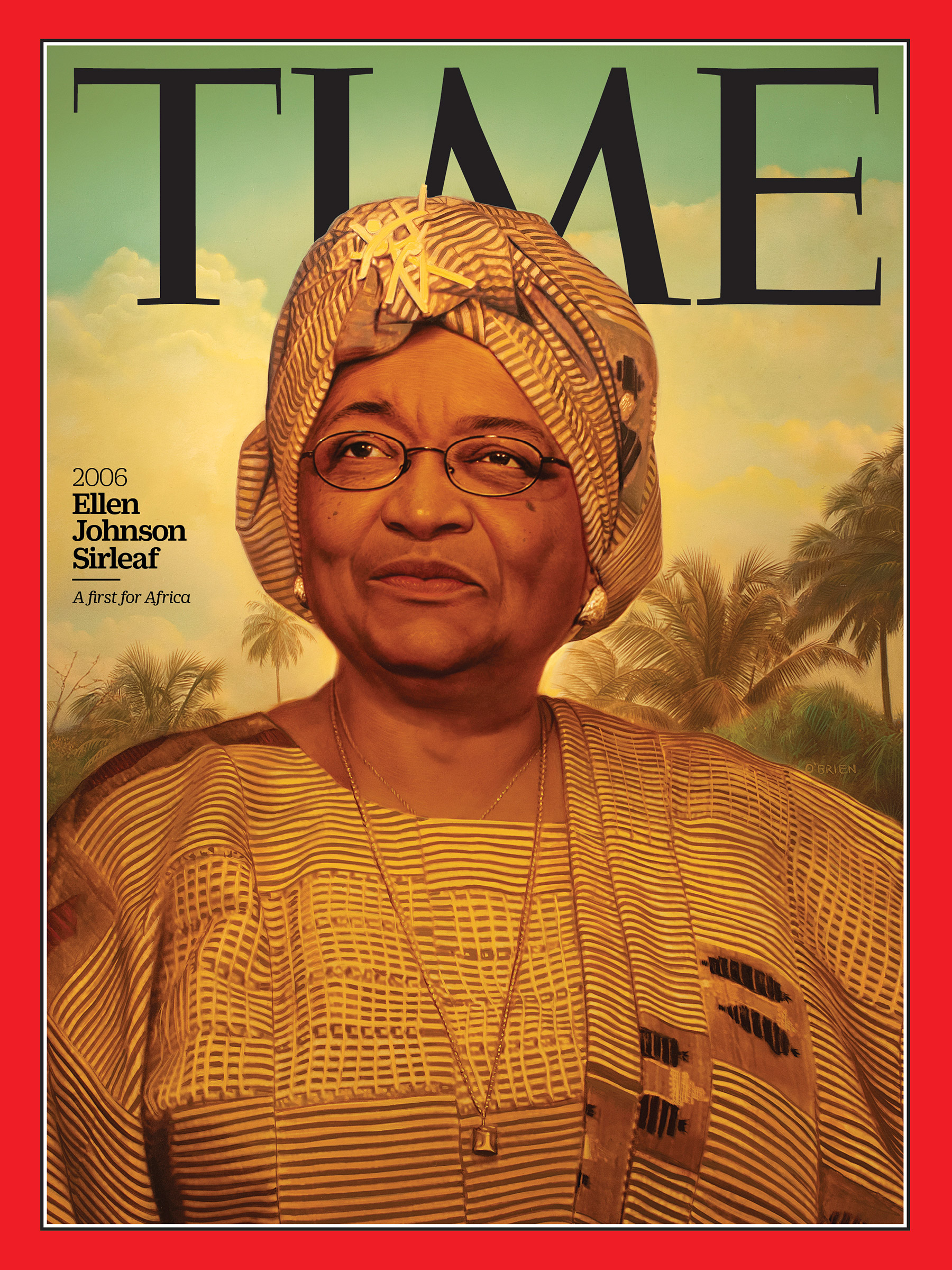After 14 years of civil war, Liberia was in shambles. Hospitals, schools and major infrastructure were destroyed. Hundreds of thousands of people had been displaced and at least 200,000 killed. Corruption was rife in the postwar transitional government. Into the breach stepped Ellen Johnson Sirleaf, who campaigned for President on a platform of fixing the mess that the men before her had created. At her 2006 inauguration, she was lauded as the first woman to be elected head of state in a modern African country, engendering hopes not only for Liberia but also for a new generation of female leaders on the continent.
As a woman in a traditionally male environment, Sirleaf embraced her contradictory nicknames—that of Ma Ellen healing her damaged nation, and Liberia’s Iron Lady. With an initial budget of only $80 million, Sirleaf rebuilt key infrastructure and ushered in an economic revival, helped by her savvy negotiation of nearly $5 billion in foreign debt relief. She maintained Liberia’s peace, helped ease its pain and became a Nobel laureate in 2011.
But for all the international accolades, Sirleaf’s presidency, which ended in 2018, is regarded with disappointment at home, where allegations of corruption and cronyism have tarnished her record. She appointed close family members to top government posts. During the 2014 Ebola outbreak, she sent military troops to quarantine a poor and heavily infected neighborhood in the capital, with bloody results. And she did not focus on empowering women or other female leaders; of the 19 candidates who ran to replace her, only one was a woman.
For all the expectations, and inevitable failures, she did achieve something unprecedented in 70 years of leadership by Liberian men: she stepped aside for someone else when her time in power was up. —Aryn Baker
This article is part of 100 Women of the Year, TIME’s list of the most influential women of the past century. Read more about the project, explore the 100 covers and sign up for our Inside TIME newsletter for more.
